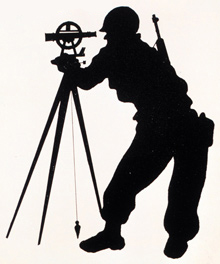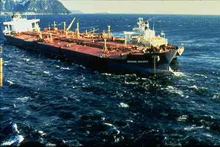Historic Events

Over 1,800 men from the Weather Bureau and Coast and Geodetic Survey volunteered for military service in World War II. The organizations demonstrated extraordinary ability to adapt to war time conditions. They embraced new and different technology, ventured to far and unfamiliar corners of the globe, welcomed women as vital and highly capable members of the workforce, and redirected their missions from civilian service to military support.
“World War II, more than any event since the founding of the Survey of the Coast in 1807 and the Weather Bureau in 1871, dramatically transformed the technological, geographic, and social landscape of these two legacy agencies of today’s NOAA.”
“The conservation and stewardship legislation of the 1970s that blossomed from the environmental movement of the day ushered NOAA into a significantly increased regulatory role in resource management.”
“The ‘Storm of the Century’ will long be remembered by the public for a multitude of reasons, but within NOAA’s National Weather Service, it will long be remembered as a major first-time accomplishment.”
Excerpts from three of NOAA’s 200th Anniversary Top Ten Historic Events

NOAA satellite image of Hurricane Katrina, taken on August 28, 2005. Over 1,100 NOAA personnel were directly involved with the federal government’s forecast and response to Katrina. NOAA’s efforts in this unprecedented disaster saved hundreds if not thousands of lives, helped disaster response teams marshal resources where they were most needed, and mitigated further environmental damage.
The diverse cluster of Top Ten Historic Events had far-reaching influence on NOAA and its predecessor agencies. One, Founding the Survey of the Coast, created the organization; others shaped large parts of its mission and established its culture. Some required a disproportionate or extraordinary response of personnel, brought about significant internal change, or paved the way for remarkable advances in scientific understanding, forecasting, and resource stewardship. For those of us who are part of today’s NOAA family, these events are reminders of the dedication of earlier generations of colleagues and their willingness to tackle and solve complex and challenging problems.
Events like Launch of TIROS I and Forecasting the Storm of the Century are single and dramatic watershed events that punctuate our history with success after long and sometimes arduous periods of testing and incremental advances. They are defining moments.

The Exxon Valdez, three days after the vessel ran aground on Bligh Reef in Prince William Sound, Alaska. This tragedy spurred Congress to pass the Oil Pollution Control Act of 1990, catapulting NOAA's capacity to conduct damage assessments for future oil spills.
Others, like the Exxon Valdez Oil Spill, sneak up, striking unexpectedly in the proverbial ‘blink of an eye.’ Yet their impacts endure. They test our resilience.
Some, such as World War II, are momentous periods resulting from powerful and inexorable forces far beyond our control. Because of their far-reaching impacts to the nation, they require nothing less than our full participation and a shift in focus for long periods of time. They test our resolve and endurance.
Ones like the North Pacific Fur Seal Treaty are rooted in perseverance and refusal to yield principled beliefs to others less so inclined. They remind us to be true to our stewardship responsibilites.
And some, like the 1970s Conservation and Stewardship Legislation, are simply grand opportunities to make a difference in protecting our marine resources, availing themselves to us because we stand at the right time and place in history. These are too good to be true.
The roots of most of these historic events stem from forces and pressures well outside of NOAA and its predecessor organizations. Some of the events, like Forecasting the Storm of the Century and establishing the National Marine Sanctuary System are the culmination of internal, ongoing work to achieve long-term goals. The significance of one such as Hurricane Katrina lies in the herculean efforts of NOAA doing its job in the face of an extraordinary natural event. In all of these 10 events, NOAA responded with the skill, resolve, and resilience that these challenges demanded. These events touched NOAA deeply. Together, they have endowed us in the NOAA family with a large part of our heritage.
So, to better understand our NOAA inheritance, let’s take a proud look (in alphabetical order, of course) at the momentous periods and defining moments in our storied history:
- 1970s Conservation and Stewardship Legislation (1972-1976): Ushered NOAA into a significantly increased regulatory role in resource management.
- Earth Day 1970: Established the favorable political climate for enacting five pieces of 1970s conservation and stewardship legislation, thereby creating the “green” side of NOAA.
- Exxon Valdez Oil Spill (1989): stimulated passage of the Oil Pollution Control Act of 1990, thereby strengthening and enhancing NOAA’s capacity to respond to and help reduce impacts from hazardous material spills.
- Hurricane Katrina (2005): demonstrated the capabilities of all elements of NOAA acting in concert to serve our nation in times of dire emergency.
- National Marine Sanctuary System (1975-2006): protected areas of U.S. marine and Great Lakes waters for their conservation, ecological, recreational, historical, aesthetic, scientific and educational value.
- North Pacific Fur Seal Treaty (1911): served as the forerunner and inspiration for laws such as the Marine Mammal Protection Act of 1972 and other NOAA stewardship legislation.
- Storm of the Century (1993): marked the first time that NOAA’s Weather Service was able to forecast a storm of this magnitude five days in advance and provide storm and blizzard warnings two days in advance.
- Founding of the Survey of the Coast (1807): marked the beginnings of both the first science agency in an embryonic federal government and NOAA’s oldest ancestor agency.
- TIROS I (1960): ushered in a new era of weather observations from space with the launch of the first meteorological satellite.
- World War II (1941-1945): transformed, more than any other event since their founding in 1807 and 1871, the technological, geographic, and social landscape of the Survey of the Coast and the Weather Bureau, two legacy agencies of today’s NOAA.
And now for our honorable mentions...










